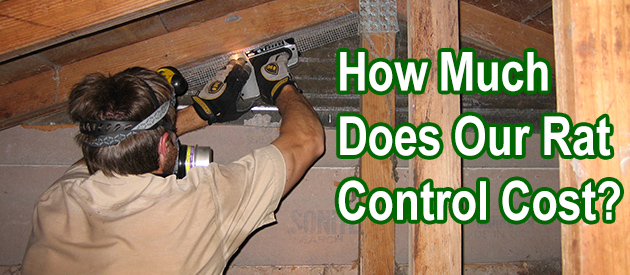Hudson County, Jersey City Rat Control Situation:
hi david, i came across your site... guess why? There's a rat between my unit (main level condo) and the upper unit. it runs up and down the chimney, across my ceiling in a soffit in a space about 4' wide x 12' long x 2' high. my handyman set 2 rat traps yesterday via removal of a can light ( also took photos of the feces to verify not squirrel). they both went off withing 20 minutes of setting but the creep didn't get caught even though there was a huge scuttle that sounded like the tasmanian devil. to find out, the handyman set the traps on top the 2x4. argh. it was quiet all night and just as soon as we thought it was scared away, the noise started up this morning. local exterminators want to drop pellets after an 'exterior inspection' for $300 - $400. (the squirrel catcher assessed the roof and grounds yesterday and yes there are a few places and probably more.) people who have poisoned rats that haven't been able to get outside say not to use poison because the animal stench is hideous and lasts up to 6 weeks. at the moment, the varmit is banging around up there, i guess walking around the traps. any suggestions? it's driving us crazy, esp when it gets aggitated or perhaps fending off a competitor - it literally sounds like a bar room brawl. thanks
Jersey City Rat Control Tip of The Week
Are Mice or Rats Easier to Trap?
Intelligence:
Mice can often be much easier to trap because they are naturally curious creatures. It often takes just one or two days to capture a mouse after setting up a mousetrap. If you're having difficulty trapping a mouse you could consider moving it to a different location. Rats can be extremely intelligent and they communicate with each other meaning that any new objects will often bring about suspicion.
Reproduction:
Rats often reproduce at a much faster rate and this can make it difficult to control a rat problem if it's been going on for a long time. Most mice have around eight litters per year with around 5 to 6 pups in each litter. Rats can have between 6 to 12 pups in their litter.
Diet:
Rats can often be ravenous eaters and often require meat or a more substantial food source in order to remain satisfied. This can often make rats very difficult to trap because they can be so fussy about their food.
Size:
Rats have a definite size advantage over mice and this often means using much larger traps and some extra measures when it comes to keeping them in a trap. Because of the extra costs of these larger traps and the need to be more careful with where you set them, the requirements to trap a rat can be considerably higher than what it takes to trap the average mouse. Most rats can reach a length of between 7-10 inches and weigh up to a pound whereas the typical house mouse maxes out around 8 inches including its tail.
Tracking:
It's often easier to track rats because they leave larger footprints and they can cause a bit more destruction with their added size and strength. This can make finding rats throughout your home a bit easier.


